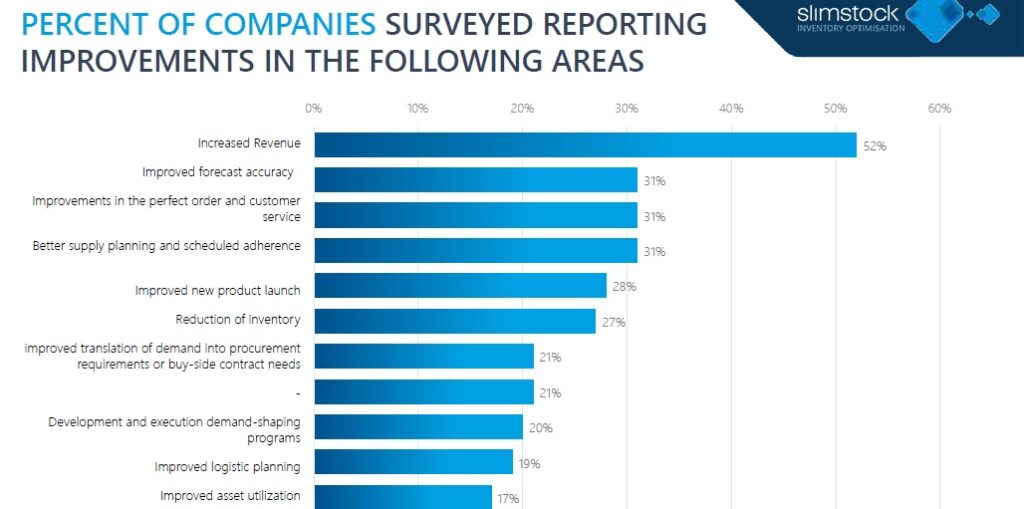Sales and Operations Planning is now considered de rigueur in businesses
Formulating a vision and strategy to sustain profitability is one of the most important expectations from the C-Suite. However, executing that strategy and taking it from top floor to shop floor also requires a strategy affirms Sandeep Walia, Chief Transformation Officer—CTO, Slimstock Middle East Africa (MEA).
In all competitive businesses, strategy execution is as important as strategy formulation. Organisations that derive greater value-add from their strategies are ones that have an effective way of putting them into action on the tactical and operational level, which is where S&OP (Sales & Operations Planning), on top of S&OE (Sales & Operations Execution), plays an essential role.
Since it originated in 1980s, Sales and Operations Planning (S&OP) has become a business management process of choice for thousands of organizations all over the world. S&OP is a structured process that aligns all functional areas of a Business (Commercial, Marketing, Finance,
Operations, and others) under an aligned set of assumptions to achieve goals set in the Strategic and Operating Plans.
What is S&OP?
S&OP aims to be a decision-making forum where plans are reviewed and validated, key business issues are identified, and different organizational functions come together to align on strategic, tactical, and operational objectives. The key input for any monthly S&OP
review is the annual Strategy / Operating Plan that aims to ensure strong alignment between Business and Supply Chain Strategy.
Supply chain strategy ultimately comes down to making choices. Businesses evaluate the needs of their customers and consumers, and the unique CVP (Customer Value Proposition) that can be offered. It becomes important at this stage to ensure that Supply Chain design is in line with CVP that a business is trying to deliver.
If the focus of the business is on NPS (Net Promoter Score), CX (Customer Experience), Customer Service but Supply Chain is focusing only on costs / working capital, there will be lost opportunities surely.
The main deliverables of Strategy Review are:
* A plan to deliver Sustainable profitability
* Ensure risks are identified, and mitigationplans are in place
* Cost and working capital efficiency
At the heart of S&OP is a four-step monthly planning cycle, comprising a series of scheduled review meetings. Product portfolio review: What changes are taking place (and when) over the horizon to ensure an attractive product portfolio, that will deliver market share and
profitability objectives? Which products will be introduced, discontinued, or changed; what will be the effect of marketing-led promotional activity and what is the timephased product plan?
Demand review: Assess forecasting capability and sales planningperformance, and to use this information to generate the latest view from
marketing and sales, under-pinned with volume and revenue projections. The sales views reconciled to gain consensus on a ‘most likely’ demand plan.
Supply review: What is the impact on the supply chain of changes in demand and the timing of product development? Are there material constraints in supporting the new demand plan and is there sufficient resource? What are the options and opportunities?
General Management Business review: Review of key performance indicators and analyses of trends in operational & financial performance Highlighting gaps vs business and strategic plans Validating Action Plan. The objective at each step of the scheduled review is to sign-off the ‘plan’.
Sign-off implies:
* The plan is realistic and can be achieved with existing resources available
* The plan meets the business requirements
Why is S&OP important?
S&OP helps the organization align on single version and source of truth so that decisions are taken from holistic standpoint. The five-step approach below, if followed with discipline can add value to top / bottom line ambitions of organizations.
How are we performing now?
* Have we met our stated objectives YTD (year to date)?
* If not, how does it impact our YTG (you’re the greatest) assumptions?
* What do we need to get back on track?
Is the agreed plan valid?
* Are the assumptions sound, wellunderstood, agreed upon and likely to produce the expected result?
* Is the plan realistic?
Is the plan sufficient?
* Does it help us achieve our monthly, quarterly, yearly AOPs (Annual Operations Planning)?
‘What if’ scenarios?
* Is the plan sensitive to “upside and downsides?
* Is the management aware of alternative scenarios?
* Do we have contingency plans?
Which resources are required?
* Do we have all bases covered?
* Any additional capital or resources needed to execute the above agreed plan?
* Which decisions need to be made?
What are the key challenges S&OP aims to resolve?
The consequences and pitfalls of silo-planning are common knowledge and very well documented. Moving from a silo-based culture to a
cross-functional collaborative planning is a transformational journey that takes time. If done properly, S&OP helps to align sales, marketing, finance, operations on a realistic achievable plan to satisfy the business growth and ambitions. S&OP ensures demand signals reflect the state of the market and customer expectations and there is an adequate supply response for it.
S&OP process aligns the organisation on corporate health and wealth related KPIs and helps to evaluate ways to improve:
* OTIF (on time in full) / Customer Satisfaction / Gross Margins
* Working Capital Utilization
* Asset utilisation / ROA (Return on Assets)
* Inventory turns
* Productivity / efficiency
* Demand accuracy

What are the main benefits of S&OP?
Apart from the organisational, cultural, and other intangible benefits, there are some key benefits of implementing a X-Functional S&OP. See chart
How to get S&OP right?
The key to ensure that S&OP adds value to the Business relies on few fundamentals:
S&OP requires the hands-on participation of executive management, up to and including the leader of the business (President, CEO, COO, General Manager, Managing Director, and other key appointments) because:
* S&OP needs to occur at the level where bottom-line responsibility resides
* S&OP contributes to decision making around policy, strategy, and risk
* Demand side dynamics and Supply side constraints need effective steering
* SLT (Senior leadership team) participation ensures consistent behaviors across organization.
S&OP is cross-functional and collaborative. It involves, at a minimum, Sales / Marketing, Operations/Supply Chain, Product Development, Finance, and General Management because:
* It allows to raise potential problems and conflicts in a proactive manner before they become crises.
* All business problems are most effectively solved cross-functionally, not in a silo.
Making S&OP work in a company is largely a matter of managing change. It is not in the data; it is not in the software; it’s not in the process charts – it is in the people. S&OP is a decision-making process that balances demand and supply at the aggregate level, aligns operational planning with financial planning, links strategic planning with day-to-day sales and operational activities, and sets the tactical
direction of the business.
Executive Management rarely has the time or the desire to deal with large amounts of detail, nor should it be necessary It is extremely important to split the decisions that we need the senior leadership team to take during S&OP into two categories
1. Review and Respond – Operational Horizon
2. Plan and Align –Tactical / Strategic Horizon at aggregated levels of product and location hierarchy
The most critical part to get right is to set the FOCUS of the Organisation when implementing or running S&OP across strategic, tactical, and operational horizons.
On the Strategic horizon, the business leaders need to have visibility on what are the different risks to their sustainable profitability goals and accordingly initiate transformational initiatives to mitigate those risks. Disruptions can come from anywhere, FOCUS on strategic horizon allows leaders to ensure that businesses are resilient and ready to deliver when needed.
On the Tactical horizon, the goal of the business leaders is to ensure that Corporate Health &Wealth is in safe waters and all the GROWTH assumptions are agreed and aligned cross-functionally
On the Operational horizon, the aim for the business leaders is to manage the volatility and gaps between demand and supply, capacity, and resources available versus the need to achieve a high degree of proficiency in AOPs and more.







